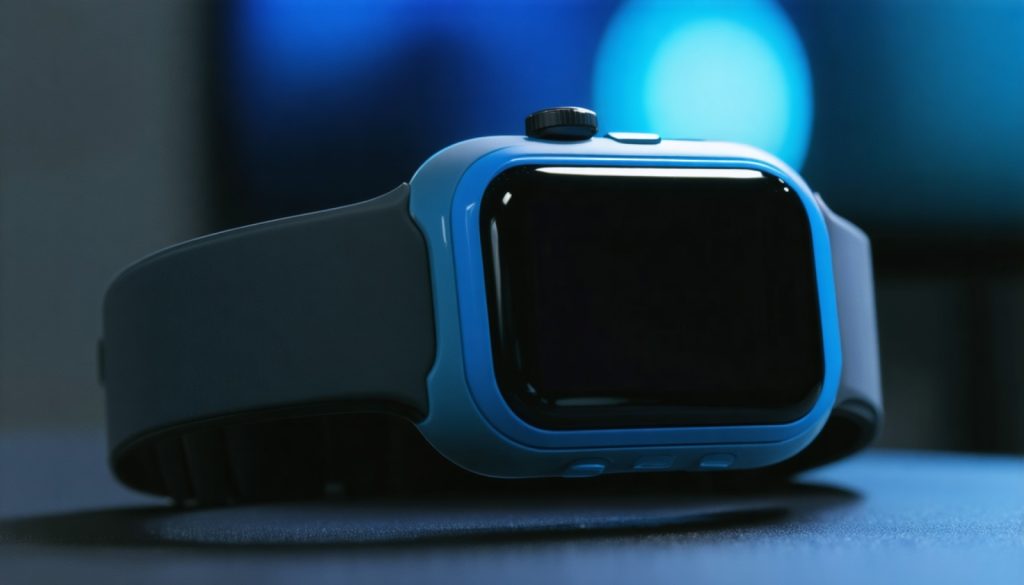
- Wearable technology is advancing, with major companies like Samsung, Google, and Apple enhancing smartwatches to offer medical-grade functionalities.
- Samsung is transforming its Galaxy Watch from mere health detection to active health management, particularly for sleep apnea.
- Smartwatches now offer capabilities like atrial fibrillation detection, personalized fitness programs, and more.
- Polar has introduced a subscription-based Fitness Program that provides personalized cardio plans to motivate users.
- Economic factors, such as trade tensions, impact wearable prices, as seen with the price hike of the OnePlus Watch 3.
- Google’s Pixel Watches introduce features like Scam Detection and Loss of Pulse Detection, enhancing safety and health monitoring.
- Ongoing innovations suggest wearables could soon play a key role in supporting health, fitness, and security.
A new chapter is dawning in the realm of wearable technology, where sleek designs meld with advanced functionalities to bring medical-grade capabilities right to your wrist. Major players like Samsung, Google, and Apple are reimagining what a smartwatch can do, transforming a humble timekeeper into a lifesaver, a fitness coach, and even a medical advisor.
One of the most exciting advancements is Samsung’s bold move toward transforming its Galaxy Watch from a passive sleep guardian to an active health manager. In partnership with Stanford Medicine, Samsung endeavors to push the boundaries of its existing sleep apnea detection feature. The goal is clear: not just to alert users about potential health issues but to actively help manage and possibly mitigate them. Picture this: your watch not only warns you of obstructive sleep apnea but proactively suggests actionable steps and adjustments based on personalized data—all powered by artificial intelligence.
This shift from detection to management echoes across the industry. The smartwatches of today, brimming with sensors and powered by sophisticated algorithms, can detect an array of medical conditions. From atrial fibrillation to hearing loss, the potential is enormous. Yet the pressing question looms: Will users stay engaged after the initial diagnosis? The answer could lie in the new wave of management features that tech companies are ambitiously rolling out.
Consider Polar’s recent reveal—a subscription-based Fitness Program fueled by science-backed methodologies to craft personalized cardio plans. Your Polar watch becomes your on-the-go fitness expert, adapting to your goals and routines, injecting a dose of motivation and structure into your daily life.
But it’s not all sleek sensors and health metrics. The wearables market also feels the tremors of global economics. Take the OnePlus Watch 3, for instance, which recently saw a substantial price hike from $330 to $500—a potential ripple effect of ongoing trade tensions between China and the U.S. This increase is a stark reminder that the geopolitical climate can directly impact tech costs, making consumers recalibrate their spending decisions.
On a brighter note, Google’s Pixel Watches are rolling out features that blur the lines between personal safety and technology. The new Scam Detection feature, armed with AI, promises to safeguard your peace of mind by analyzing calls for suspicious activity. And the Loss of Pulse Detection feature underscores the life-saving potential of wearables by automatically contacting emergency services if your pulse disappears—groundbreaking, indeed, but only if you opt in.
As whispers of Apple Watch innovations fill the air—particularly a rumored redesign borrowing from visionOS—it’s clear that the wearable landscape is pulsating with innovation. The challenge and opportunity lie in how these devices can become indispensable companions in our pursuit of health, fitness, and security.
What does this all mean for you? Embrace the evolution. The technology dawdling on your wrist could soon be the key to a healthier, more connected life. Stay curious, stay informed, and let these digital marvels keep you on the cutting edge of what’s possible.
Revolutionizing Wristwear: The Future of Smartwatches as Essential Health Companions
The Evolution of Smartwatches: Beyond Timekeeping
The smartwatch industry is witnessing a pivotal transformation, evolving from basic timekeeping devices to sophisticated health management tools. Industry titans such as Samsung, Google, and Apple are at the forefront, driving innovation with medical-grade features that integrate seamlessly with everyday health management.
Samsung’s Vision with Galaxy Watch:
Samsung has taken a groundbreaking approach with its Galaxy Watch, collaborating with Stanford Medicine to enhance its sleep apnea detection technology. Their goal is not only to alert users about possible health issues but also to suggest actionable management strategies through AI-driven insights. This proactive health management tool offers users personalized health recommendations, moving beyond simple monitoring.
AI in Wearables:
AI algorithms embedded in these devices enable smarter health solutions. From predicting atrial fibrillation to detecting hearing impairments, smartwatches are becoming critical health advisors. However, sustaining long-term user engagement post-diagnosis remains a challenge. Enhanced features that provide continuous engagement and education could be key to overcoming this obstacle.
Adding Value with Personalized Fitness Programs
Polar’s Subscription Model:
Polar has introduced a subscription-based Fitness Program, harnessing scientific methodologies to personalize cardio plans. This service transforms wearables into dedicated fitness coaches, adapting to user goals and lifestyles. By injecting structure and motivation, such programs elevate the user’s fitness experience and enhance commitment to health goals.
Economic Influences on the Wearable Market
Price Hikes and Trade Impacts:
While wearable technology advances, geopolitical factors impact the market. The OnePlus Watch 3’s significant price increase from $330 to $500 suggests that global trade tensions, particularly between China and the U.S., can directly affect consumer costs. This highlights the importance of staying informed about economic trends when making purchasing decisions.
Google Pixel Watch: Merging Safety with Technology
Google’s Pixel Watches have embraced safety with advanced features like Scam Detection and Loss of Pulse Detection. These innovations exemplify how wearables can provide not only health support but also personal security, offering peace of mind by proactively managing unexpected situations.
Upcoming Innovations: Apple’s Vision for Wearables
As Apple fans anticipate a major redesign inspired by visionOS, it’s clear that the wearable sector is continuously evolving. Each advancement offers both opportunities to enhance user health and potential challenges in terms of user adoption and data privacy.
FAQs and Pressing Questions
– How do I choose the right smartwatch for health management?
Look for devices with features that match your health needs and lifestyle, such as sleep tracking, heart rate monitoring, and compatibility with fitness apps.
– Are these new features secure?
Leading companies prioritize user security, but it’s crucial to read privacy policies and maintain updated security settings on your devices.
– Can a smartwatch replace traditional medical care?
While beneficial for monitoring and preventive care, smartwatches should complement professional medical care, not replace it.
Actionable Recommendations
– Stay Updated: Regularly check for software updates to enhance performance and security.
– Prioritize Features: Identify which features are most critical to your health goals.
– Evaluate Long-Term Costs: Consider both initial price and potential subscription fees for fitness programs.
Conclusion
Embrace the wearable technology evolution to enhance your health and well-being. As smartwatches become increasingly integrated into our daily lives, staying informed and adapting to new features can lead to a healthier, more efficient future.
For more insights and updates on the latest technology trends, visit Samsung, Google, and Apple.



